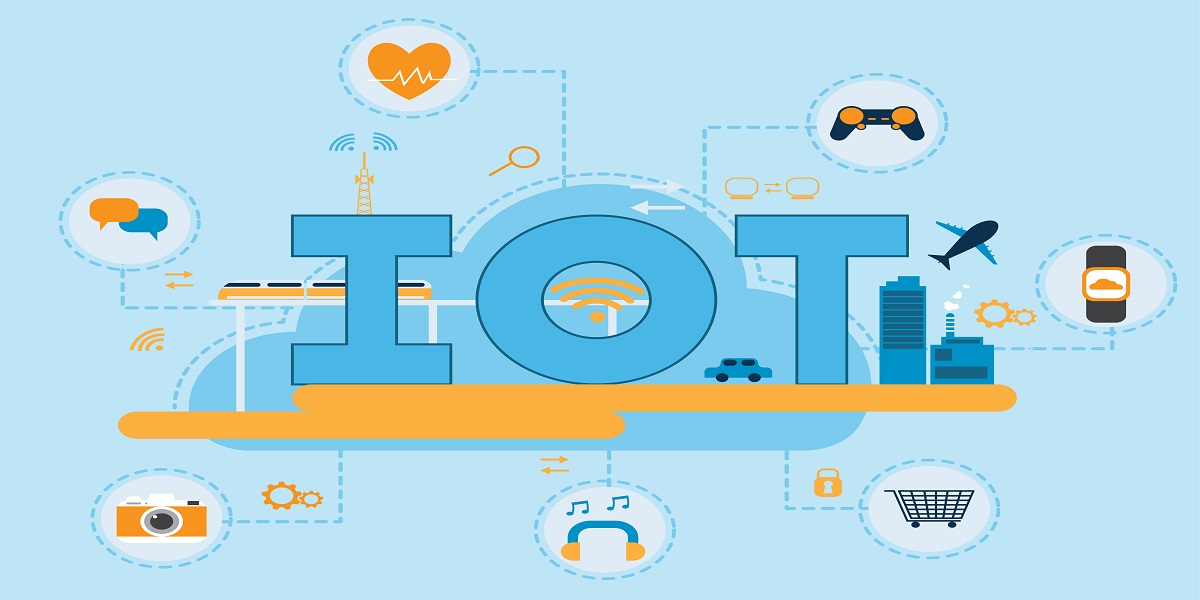How Big is the IoT? Unleashing The Greater Tech Wave of the Decade!
- By Mary Smith
- 13-10-2022
- Internet of Things

The internet of things (IoT) is an emerging technological trend and the future of the industrial revolution. From a smart speaker to a home thermostat, the IoT is everywhere, making communication between people, objects, and processes easier and smoother. The potential of IoT is so huge that all big organizations are using it to share data inside and outside the premises.
The internet of connectivity has gone beyond smartphones and computers. Now it is being used for recording, sharing, and communication with little human intervention.
In this post, we will look at some IoT-based applications that are revolutionizing different industries. 7 IoT-Based Applications That Will Evolve in the Year Ahead
The following are the IoT-based applications that will evolve with time and change how we work and live.
1. IoT in Medical Devices
The future of IoT in healthcare is vast and has immense potential to transform the overall industry. It is forecasted that the IoT in the healthcare industry is expected to skyrocket in the next eight years, increasing from USD 57.62 billion in 2019 to USD 352.88 billion by 2027.
IoT can make healthcare cheaper and more efficient in the future and allows doctors to monitor patients remotely using various IoT devices.
Apart from patient monitoring, there are other devices where IoT will be used to track the actual time location of medical equipment, like wheelchairs, defibrillators, nebulizers, oxygen pumps, and other monitoring equipment.
2. Transportation
IoT is massive and vast, making space in transportation sectors stronger and disrupting the industry significantly. It shows IoT is being used for controlling, monitoring, and driving the car with the smartphone. Some examples of the same are smart cars.
Apart from this, concepts like predictive maintenance, analytics, real-time monitoring, and geo-fencing boost the industry's efficiency like never before.
It is estimated that many new vehicles with IoT telematics will transform the industry more by 2025. The major benefit of this is that drivers can track the moment of the vehicles and other mobile equipment in real-time on an electronically generated map, majorly using GPS technology and On-board Diagnostics.
3. Smart Cities
Smart cities are not a new concept. Instead, many embedded technologies have kept helping cities operate effectively and efficiently for years with the devices like connected sensors, lights, and meters to collect and analyze data. And this trend will continue to be the same in the future too.
It is estimated that the IoT in smart cities in the market will grow exponentially by USD 312B by 2026. This data shows how using data and technology will make everyday life easier and better for the people who live in cities and maximize the use of resources.
4. Industrial Internet
The industrial internet is a highly emerging trend in the industrial sectors, also called IIoT. This new trend empowers industries with IIoT solutions like sensors, software, and big data analytics to build great machines.
According to Jeff Immelt, IIoT is an asset that is "beautiful, desired, and investable." The core belief of the IIoT is that innovative machines are better than people in terms of accuracy and consistency in communicating through data. Additionally, this data enables businesses to identify inefficiencies and issues earlier.
According to GE, this new trend will generate USD10 million to USD15 million over the next five years.
5. Wearables
Another area that IoT has transformed is wearables. Earlier, we used to wear normal watches with no embedded system connected to make them smart. But today, with the increasing drive of IoT in the market, innovative wearables are making life easier by allowing them to track their health, send message notifications, show reminders, and many more.
This wearable technology has improved so much that it has infiltrated new markets, allowing humans to improve their daily lives. And it is estimated that the market for the same is less likely to become a thing of the past. With a CAGR of 11.3%, the need for wearable devices will reach $62.82 billion by 2025.
6. IoT in Agriculture
The IoT industry has disrupted many industries, and agriculture is no exception. It has impacted the agriculture industry in a big way. As per recent data, the world population is about to reach 9.6 billion by 2050. And to feed this massive population, the agriculture industry is bound to adopt IoT. This adoption of IoT will help eradicate challenges like weather conditions, climate changes, and environmental impact and meet the demand for more food.
7. Smart Grids
Smart Grid is another essential application of IoT. It is a digitally enabled electrical grid responsible for real-time monitoring of data regarding the supply and demand of electricity. One of the best examples of an intelligent grid is solar panels. And it is said that these smart grids will replace the traditional grid in the coming year. It will allow consumers to have a better quality of energy system.
Conclusion
Looking at the above trend, it is clear that the IoT's future is promising and will bring a macro shift in how we live and work. Also, this will lessen the burden on human beings. Moreover, it will also contribute to making the economy and businesses perform better. Therefore, IoT is a way of life itself, not merely a device for unfettered communication.


.jpg)
.jpg)
.jpg)
